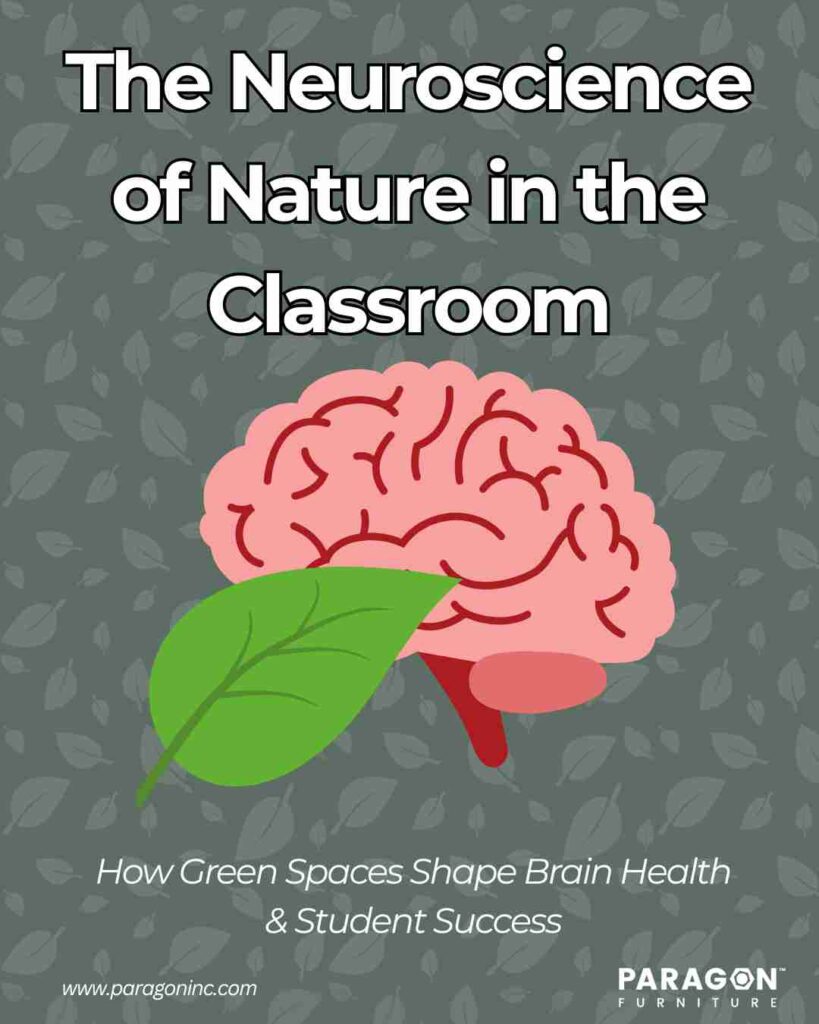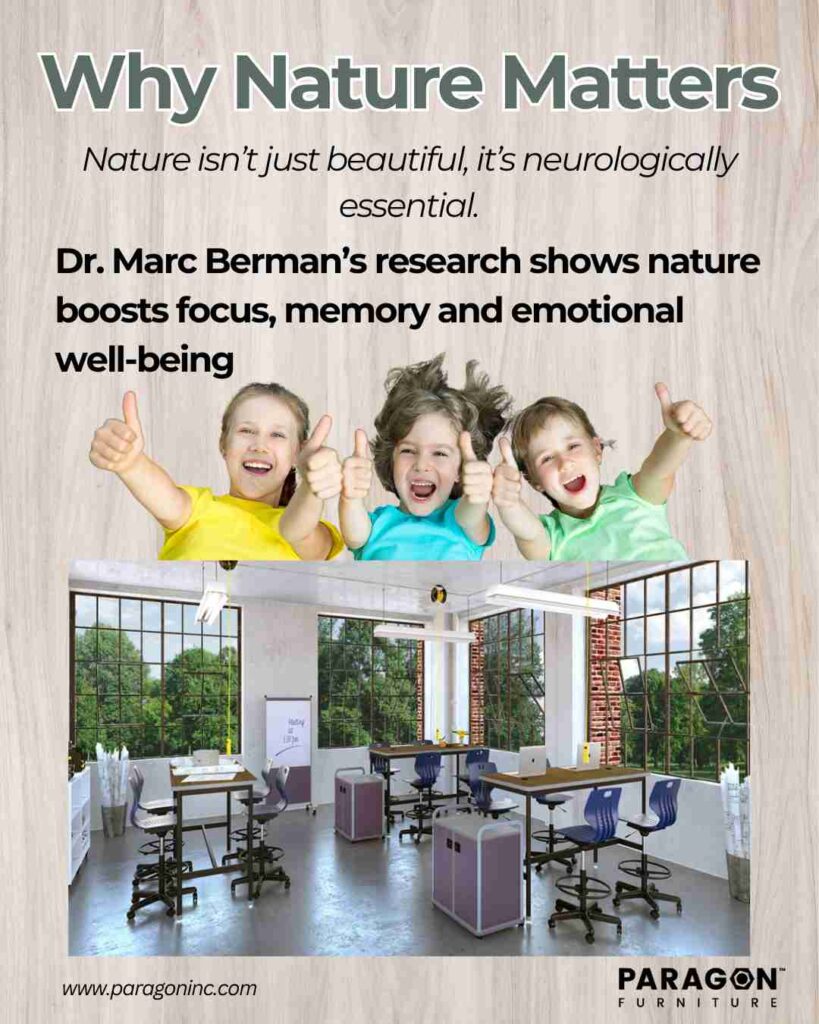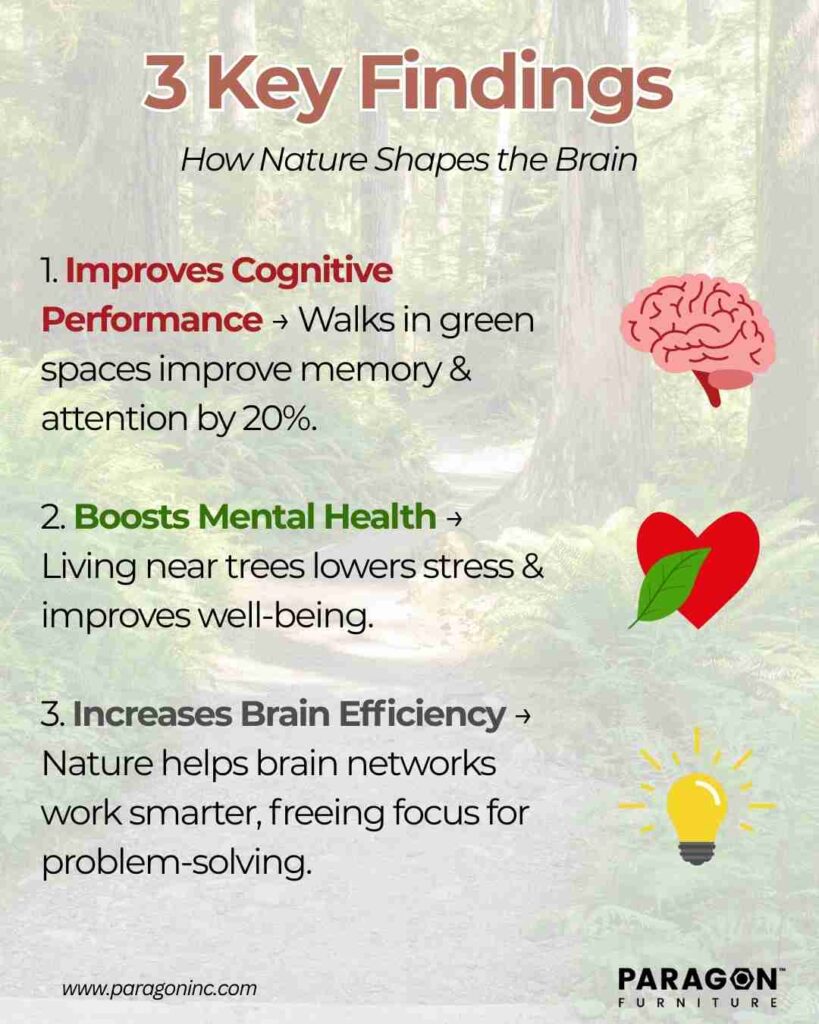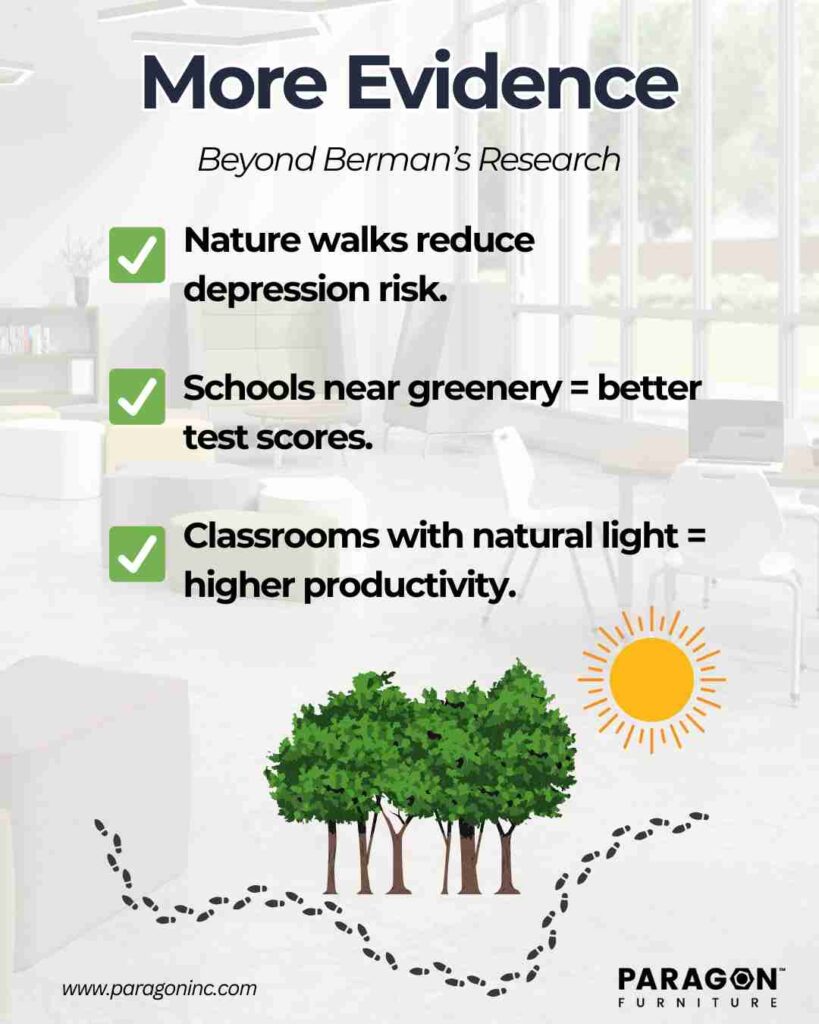the neuroscience of nature in the classroom





Supporting healthy brains starts with nature.
From improving memory and focus to reducing stress, green spaces play a powerful role in shaping how students think, feel and learn. Discover how environmental neuroscience and biophilic design are transforming classrooms into spaces that boost cognitive health, emotional well-being, and long-term student success.
Why Nature Matters in Education
Marc G. Berman, psychologist and director of the Environmental Neuroscience Lab at the University of Chicago, has uncovered powerful insights into how natural environments influence brain health, focus and emotional well-being. His work demonstrates that nature isn’t just beautiful, it’s neurologically essential. For schools, this means classrooms designed with nature in mind can directly improve learning outcomes.
Listen to the full podcast: “The Huge Impact of Environmental Neuroscience: Effective Ways to Grow Attention and Cognition with Dr. Marc Berman”
Key Findings
- Improves Cognitive Performance: Short walks in green spaces improve memory and attention by 20%, compared to urban walks. (Psychological Science, 2008)
- Boosts Mental Health: Living near trees and greenery is linked to lower stress and higher well-being, even after socioeconomic factors and considered. (Scientific Reports, 2015)
- Increase Brain Efficiency: Exposure to nature helps brain networks work more efficiently, freeing up capacity for problem-solving and focus. (Journal of Cognitive Neuroscience, 2012)
- Counters Urban Fatigue: City noise and overstimulation cause mental fatigue, but nature helps reset attention and restore executive function. (PNAS, 2015)
- Strengthens Self-Control: Students with more access to green space show better decision-making and impulse control. (BMC Public Health, 2016)
- Supports Smarter Design: Integrating green spaces into schools and cities provides measurable psychological and cognitive benefits. (Terrapin Bright Green Report, 2014)
Beyond Berman: Supporting Evidence
Other researchers have reinforced Berman’s conclusions:
- Nature & Depression: A Stanford study found that walking in nature decreases rumination, a risk factor for depression (PNAS, 2015).
- Academic Performance: Schools with more greenery nearby report higher student performance and attention scores (Frontiers in Psychology, 2019).
- Workplace Productivity: Employees in offices with natural light and views of greenery report higher job satisfaction and productivity (Journal of Environmental Psychology, 2014).
The Classroom Connection
Nature isn’t just nice—it’s neurologically necessary.
Berman’s research provides powerful evidence that integrating green spaces into daily life supports attention, mental health, and cognitive efficiency. For educators and designers, this means building classrooms that actively support learning rather than unintentionally hindering it.
Practical Applications for Schools:
- Reduce Overstimulation: Incorporate calm, natural tones and clean aesthetics in furniture and classroom design to minimize cognitive overload.
- Bring Nature In: Add plants, natural textures, and outdoor views into classrooms to boost focus, memory retention, and overall student well-being.
- Flexible, Biophilic Seating: Use furniture designed with simplicity, clean lines, and natural inspiration to reduce visual noise and support comfort.
- Outdoor Learning: Schedule lessons outside or encourage short outdoor breaks to help reset student attention and reduce stress.
Why This Matters for Education
Investing in biophilic design and integrating nature into classrooms is more than an aesthetic choice—it’s an evidence-based strategy to improve student outcomes. By reducing overstimulation, enhancing attention, and supporting emotional regulation, schools can create environments where students are not only learning but thriving.
The science is clear: classrooms designed with nature in mind are classrooms designed for success.
